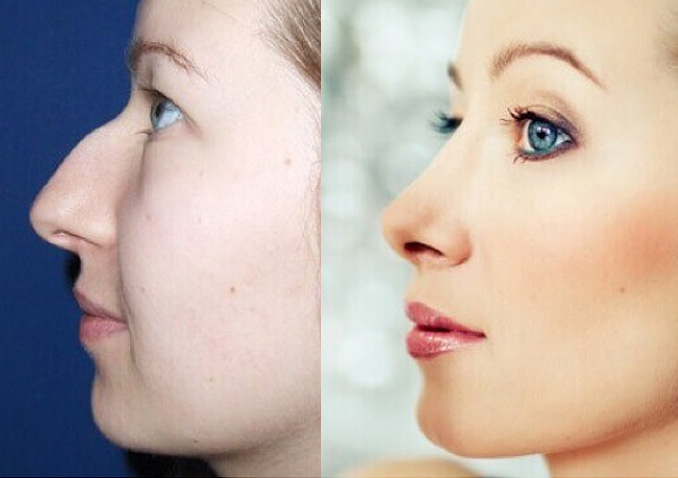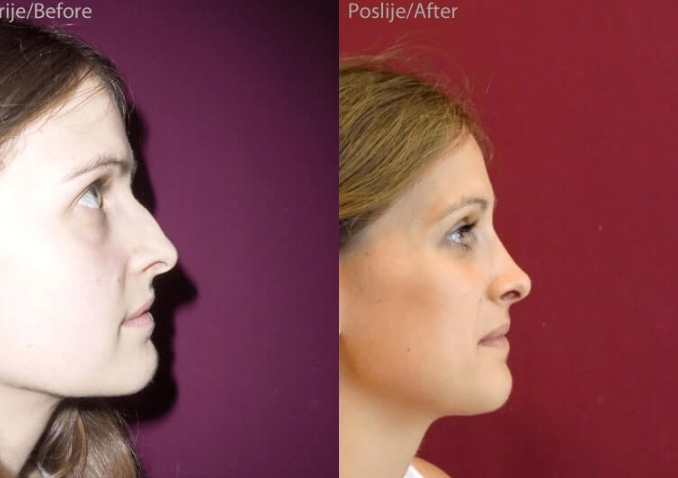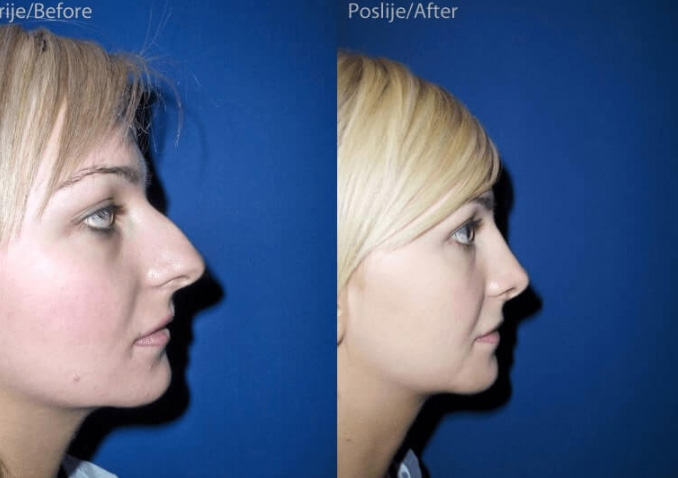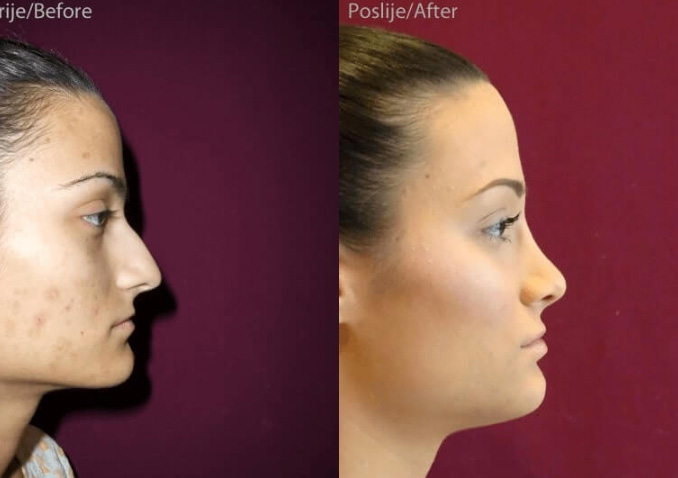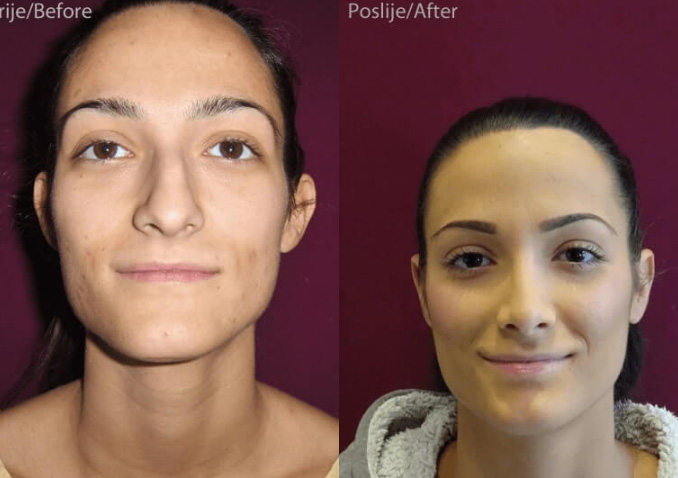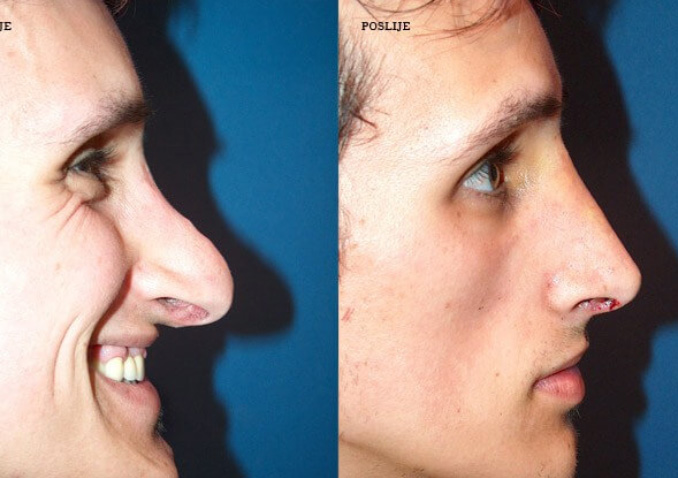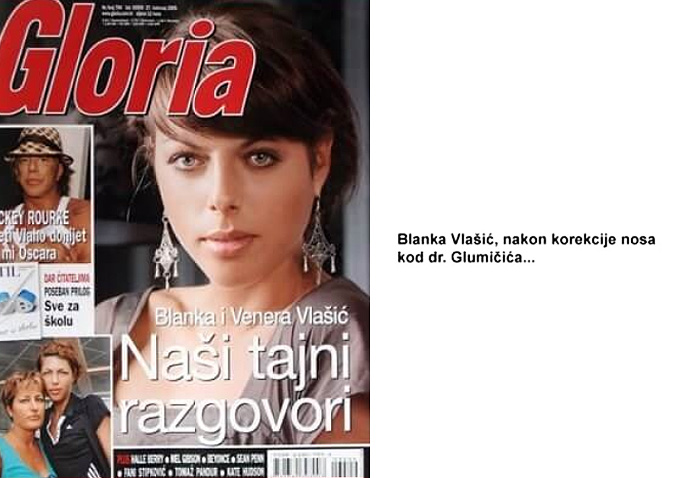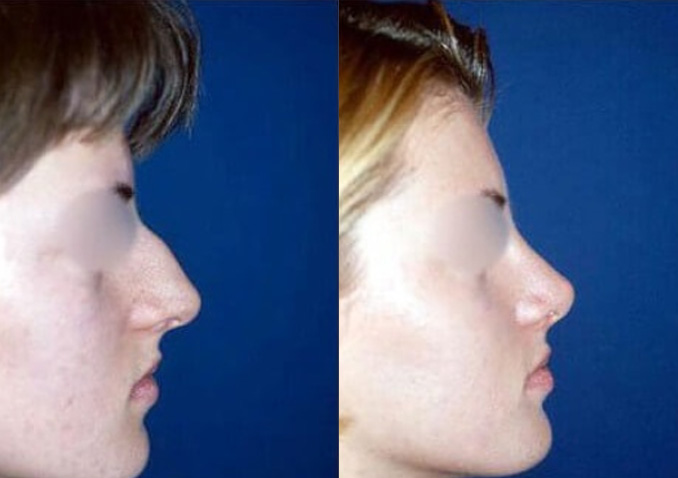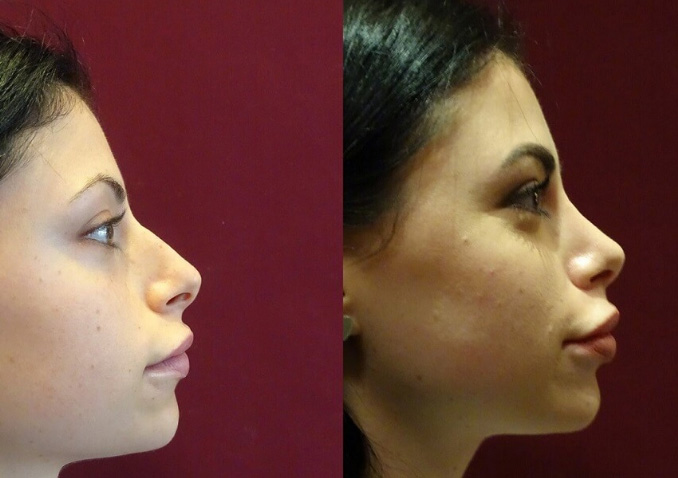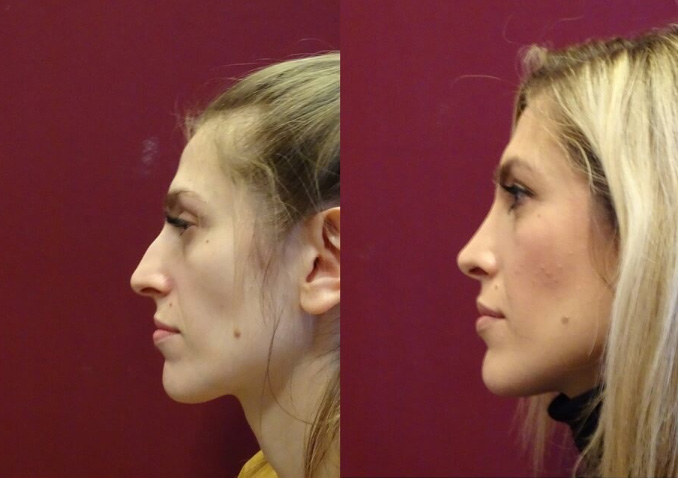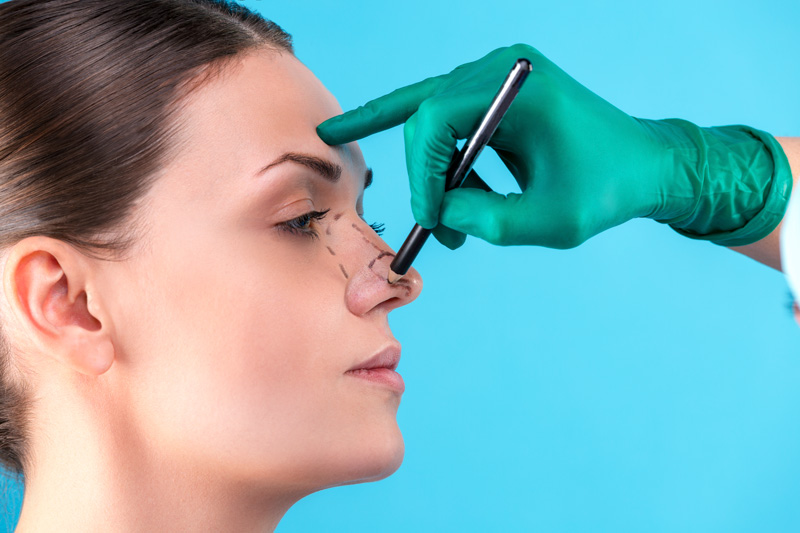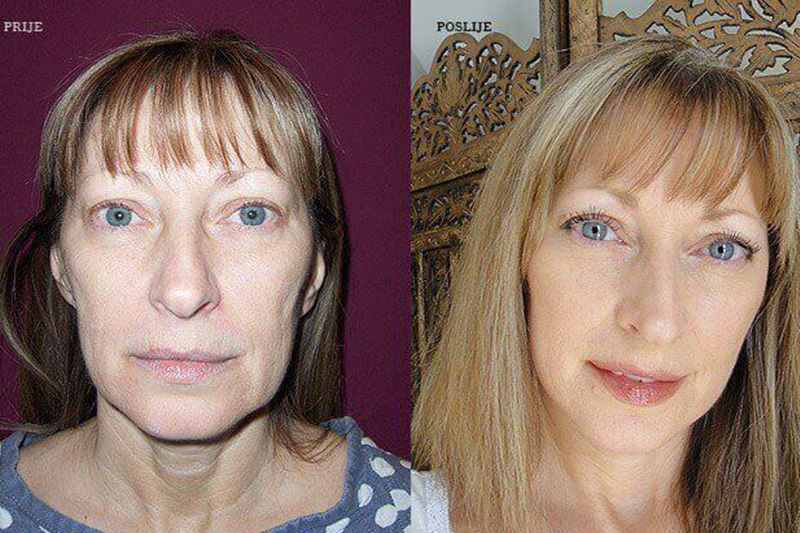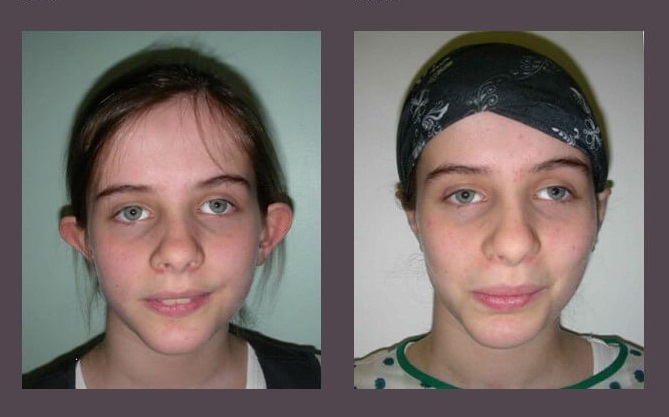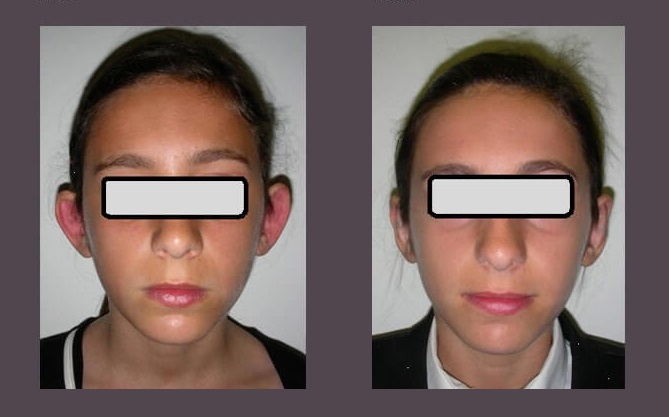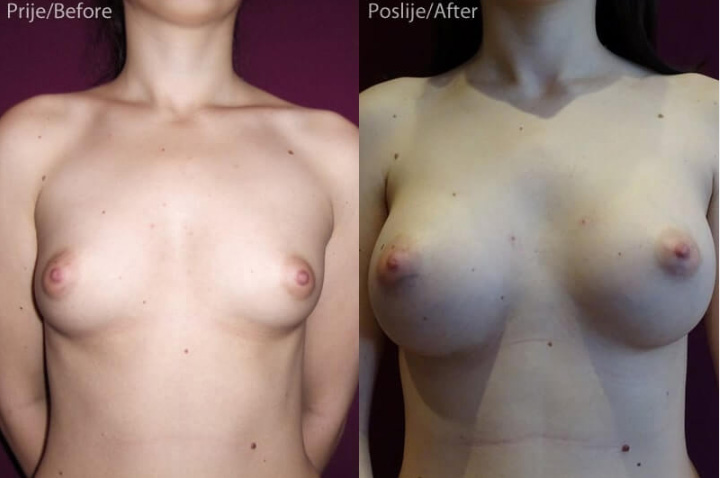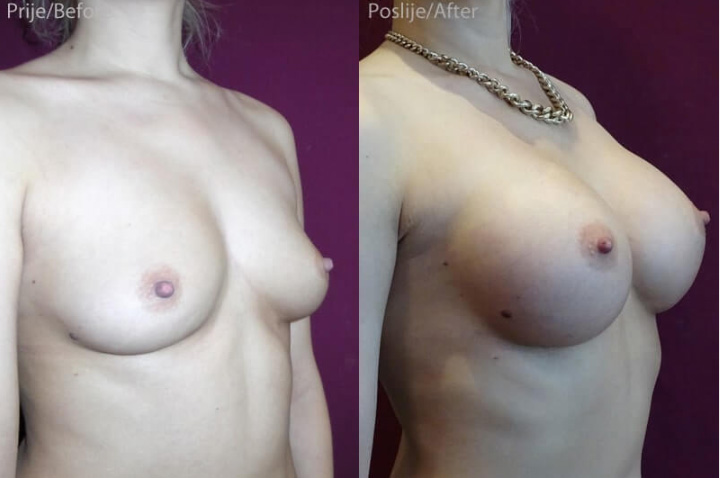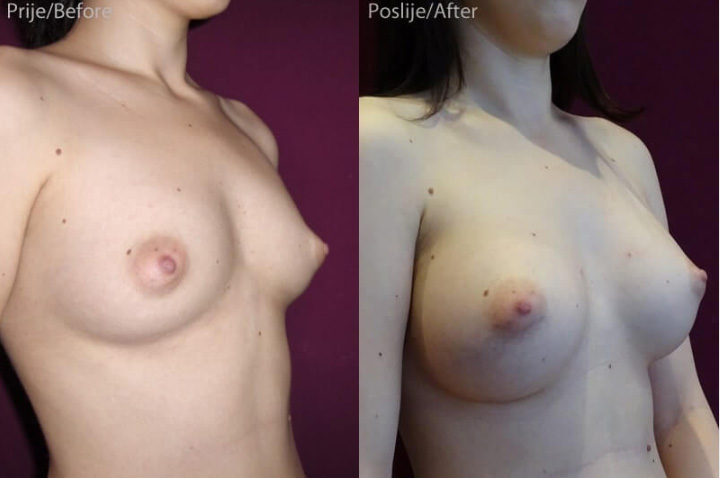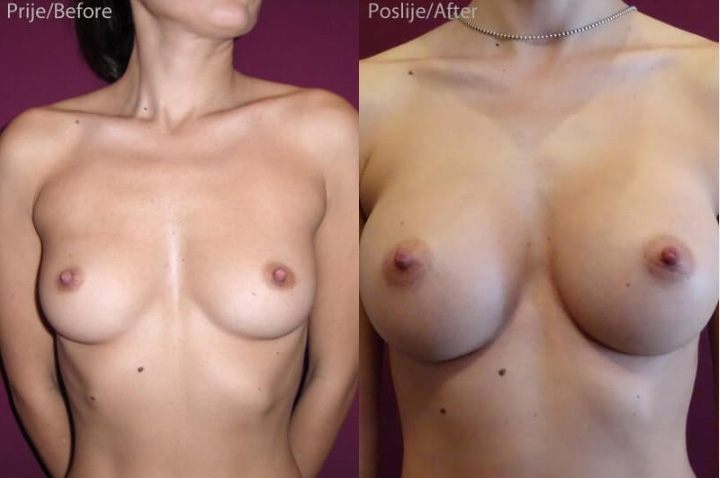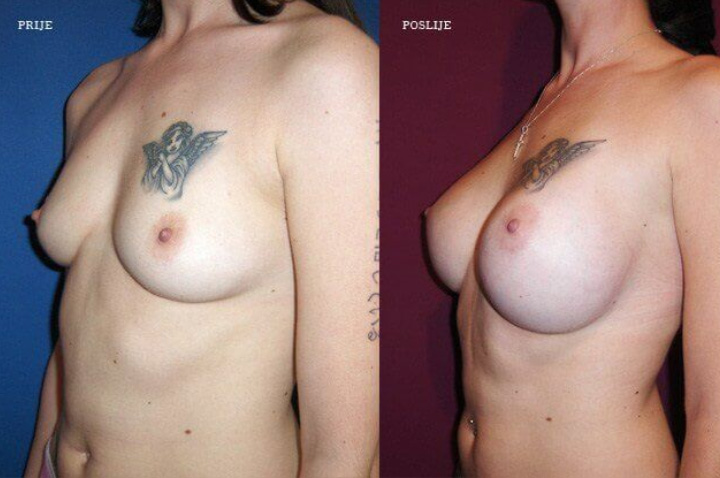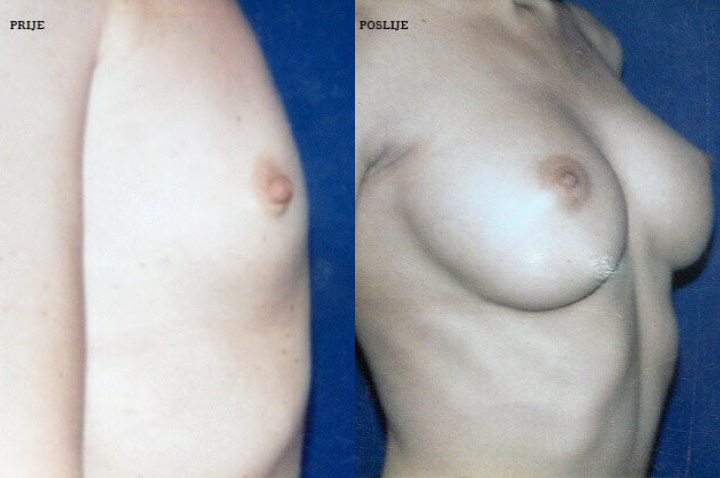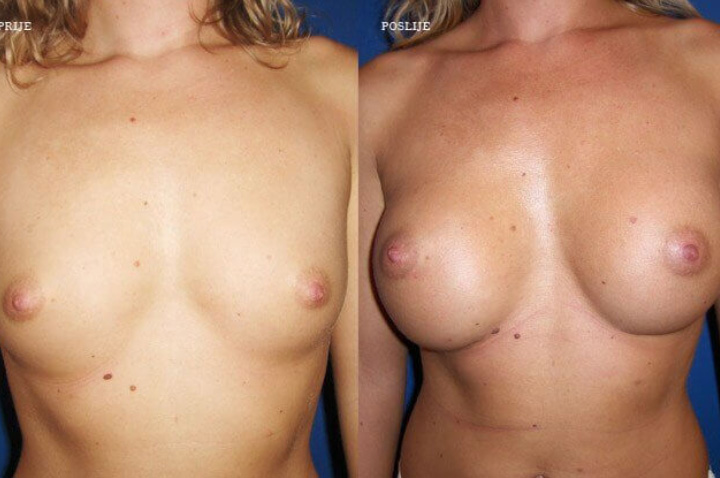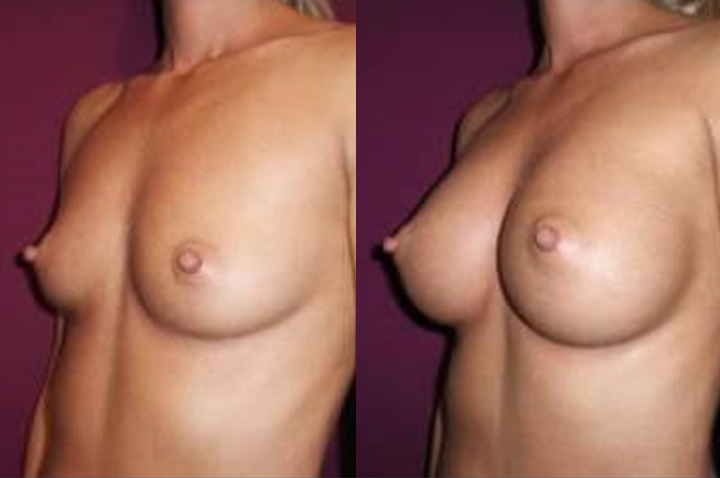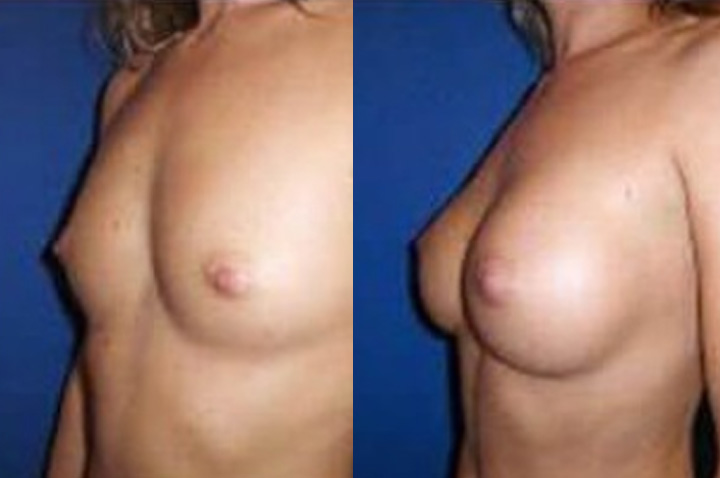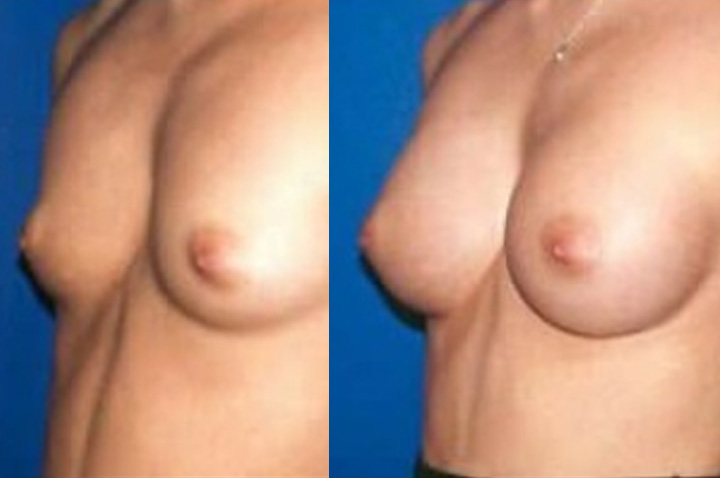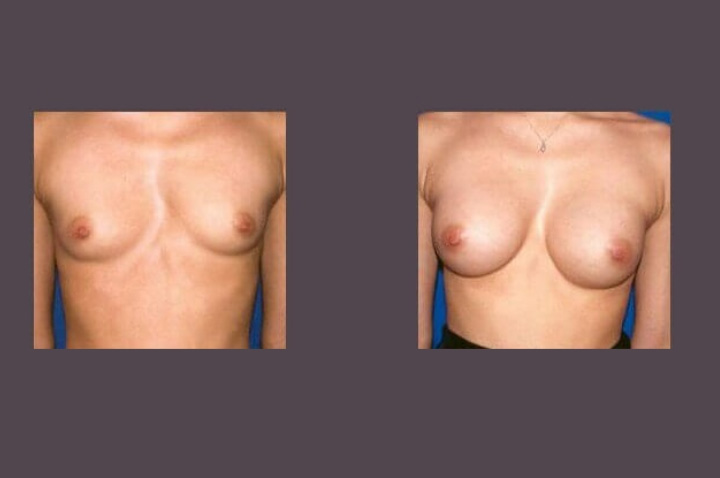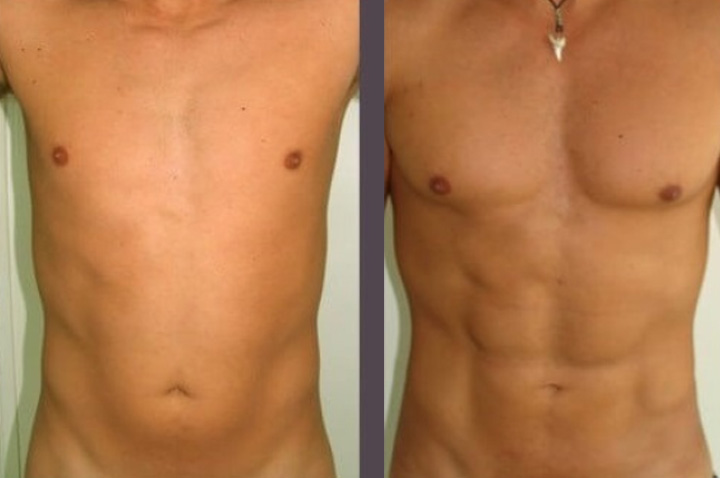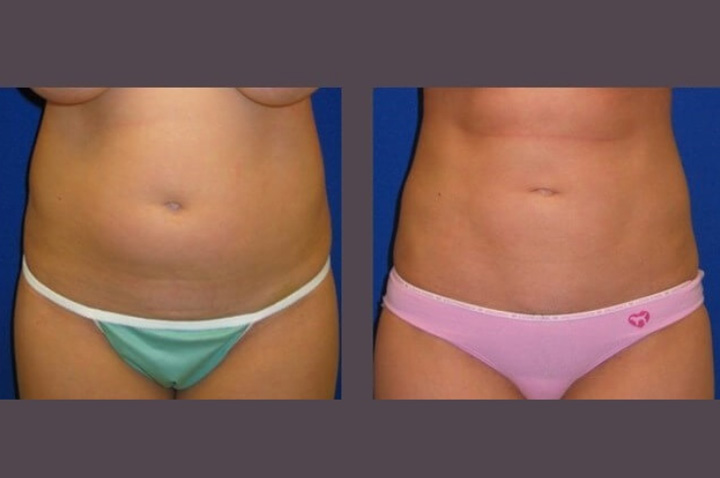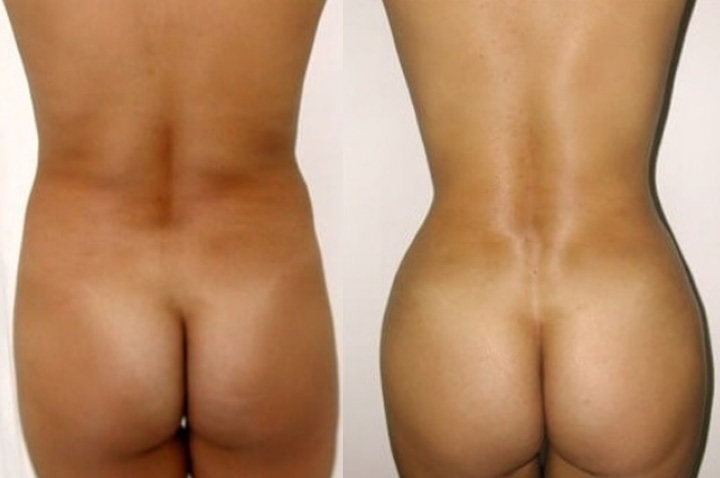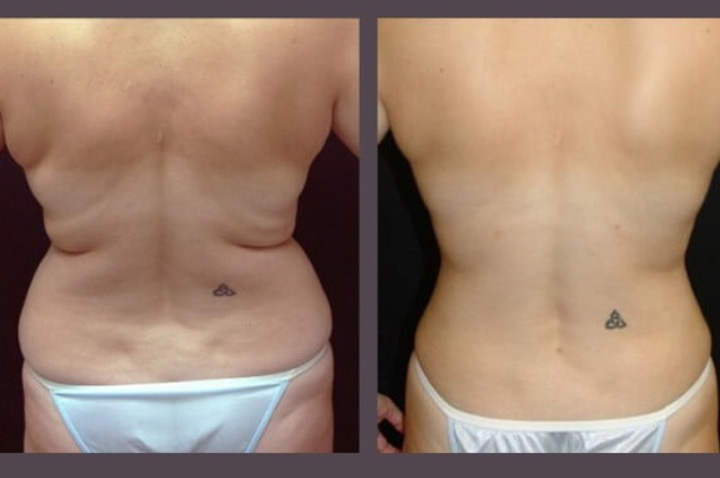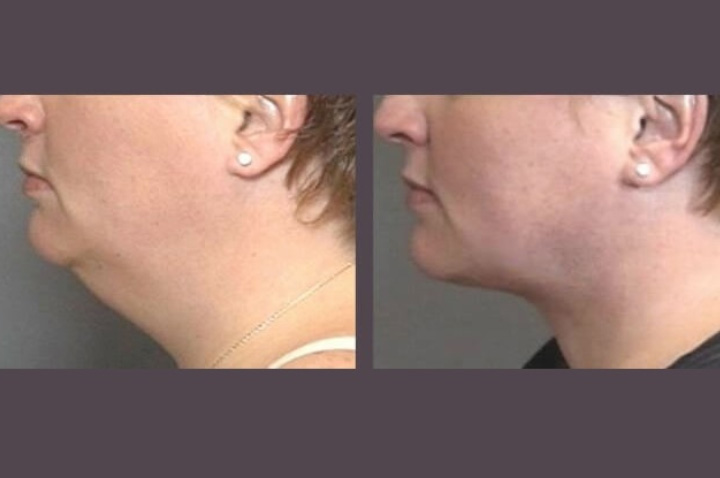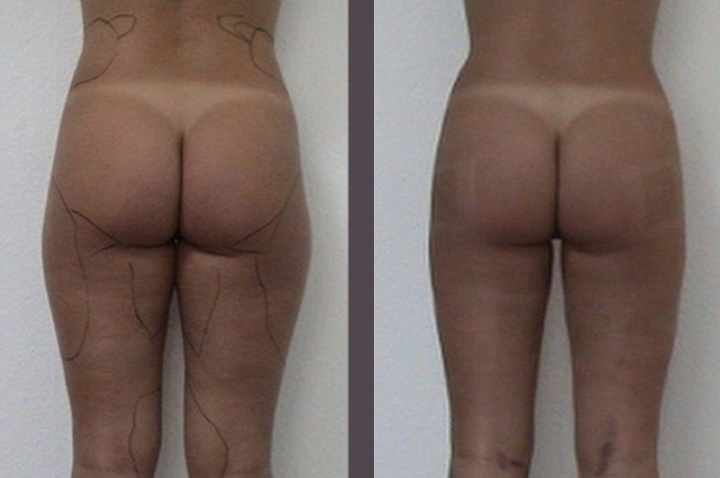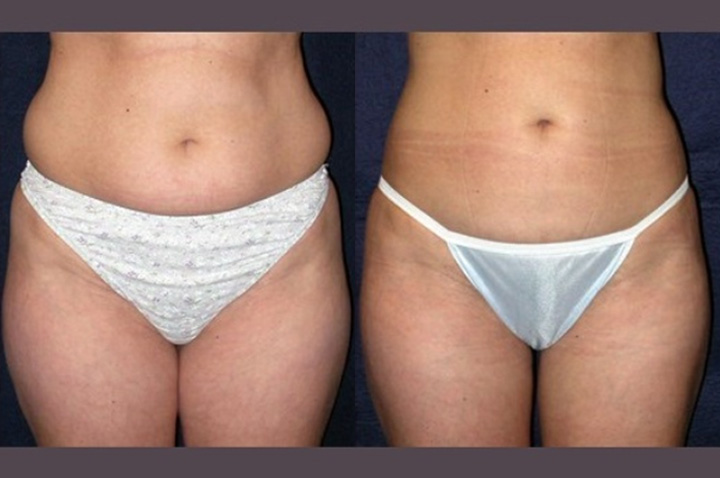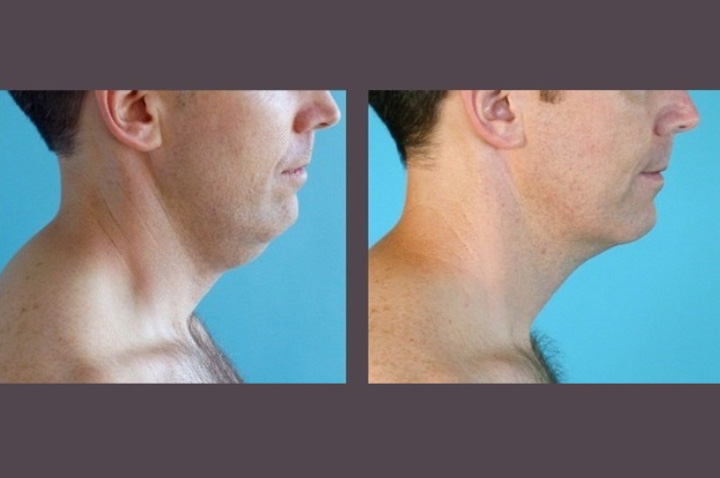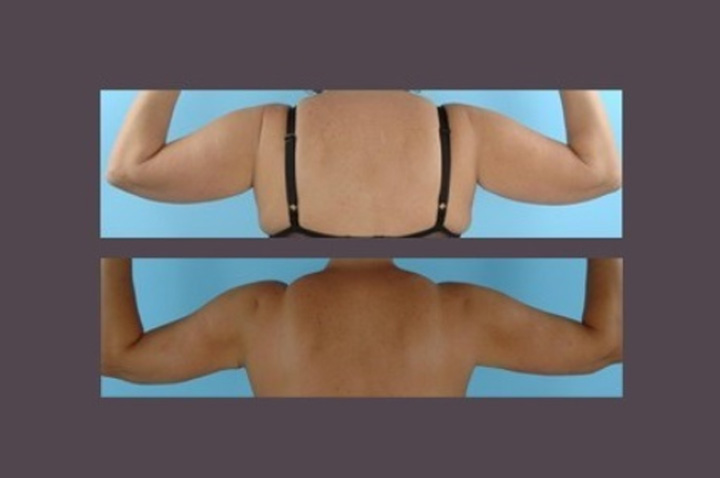SPECIALIZED HOSPITAL ARS MEDICA & GLUMIČIĆ MEDICAL GROUP
Contact
Gavra Vukovića b.b, Podgorica
Dentistry: 020 227 227
Polyclinic: 020 227 224
Gynecology: 020 227 444
Contact
SPECIALIZED HOSPITAL ARS MEDICA & GLUMIČIĆ MEDICAL GROUP
Aesthetic non surgical procedures
Intimate rejuvenation procedures
NOSE
Change for the better.
Nose correction (Rhinoplasty) is one of our most common corrective procedures in the area of facial aesthetic surgery and it is definitely one of the most challenging and dynamic surgical procedures. The surgeon’s experience and aesthetic sense of the entire face is particularly important in this procedure, and the results can improve the entire facial harmony and beauty. Aesthetic nose surgery can often be combined with the so-called functional correction of the nasal partition – SEPTOPLASTY, thus taking care of both the aesthetic and functional aspect of the nose in one procedure. Using a surgical incision inside the nostrils ensures that there are no external scars and the recovery itself is faster and generally painless.
OPERATION

Anaesthesia
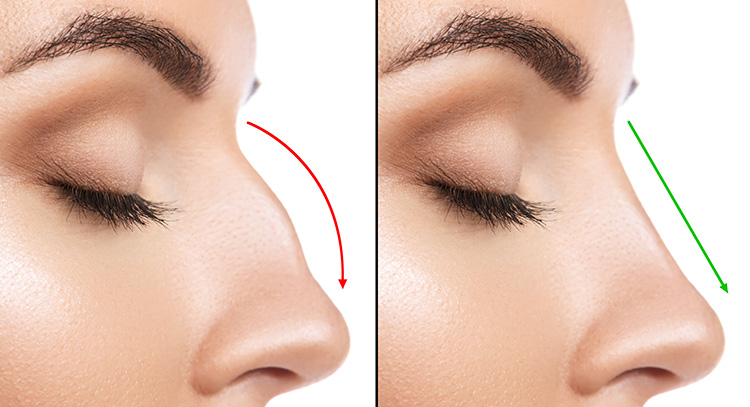
Preoperative procedure
Postoperative procedure
Revision rhinoplasty
During the consultation prim. dr. Glumičić will adress all the existing problems and carefully explain what needs to be done to achieve the best result possible.
FACE
Reflection of joy.
Face Lifting / SMAS Face Lifting
A face lift surgery is one of the synonyms for aesthetic surgery. Ageing of the human face is an unavoidable process supported by the gravitational force of our planet, as well as by natural ageing mechanisms in human cells. FACE LIFTING, i.e. tightening the skin of the face and neck belongs to rejuvenation procedures and the renewal of the face and neck appearance. A careful surgical approach and modern technology enable the removal of excess, saggy skin of the face and neck, a double chin, and elimination of wrinkles. At the same time, the SMAS technique is used to return the muscles of the face and neck in their prior position. The results of the procedure renew and rejuvenate the appearance drastically, but always in a natural way, without a mask effect.
Preoperative procedure
If you are taking aspirin or similar products which reduce blood clotting, it is necessary to end such treatment at least two weeks prior to the operation, and if you are a smoker, it is advisable to quit smoking several weeks prior to the procedure. Our staff will give you all the other details regarding the preoperative procedure.

Anaesthesia
OPERATION
Postoperative procedure
Basic recovery lasts for around 10 – 12 days after which most patients return to their everyday activities.

BLEPHAROPLASTY / EYELID SURGERY
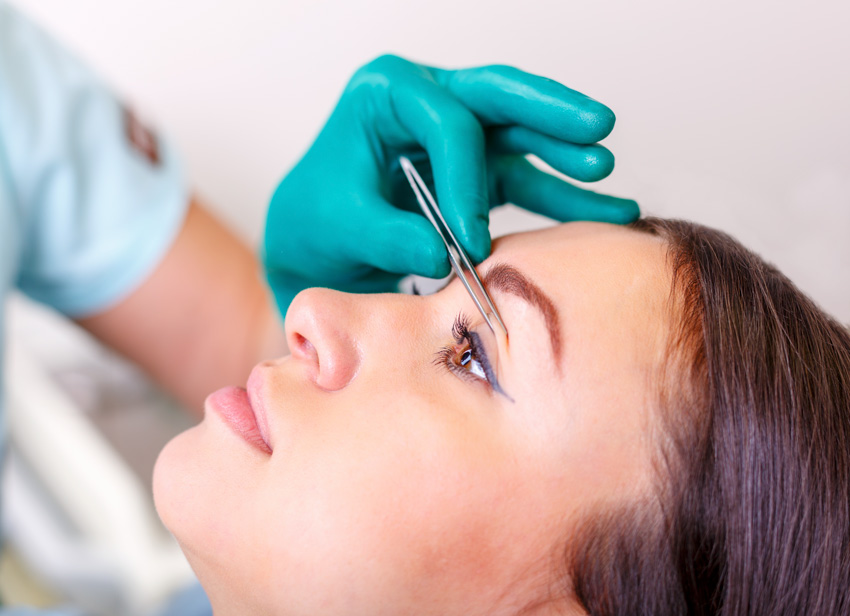
Preoperative procedure
Anaesthesia
OPERAtion
The TRANSCONJUNCTIVAL METHOD of removing under-eye bags that we have been using at the Clinic for a number of years entails a laser or radio wave incision in the lower eyelid conjunctiva – without a skin incision or visible sign of operation. This method can be used to remove adipose tissue causing under-eye bags at an early life age. This technique is used to avoid various complications, such as an ECTROPION, i.e. an outwardly turned lower lid, and the postoperative recovery is much faster.
Postoperative procedure
Transconjunctival blepharoplasty
About the procedure
Preoperative procedure
Anaesthesia
OPERATION
Postoperative procedure
All of our patients receive our emergency phone number where they can reach our staff at any time in case of any need.
MENTOPLASTY / CHIN CORRECTION
aBOUT THE PROCEDURE
Preoperative procedure
Anaesthesia
OPERATION
Postoperative procedure
OTOPLASTY / PROTRUDING EAR CORRECTION
Unlike classical methods of otoplasty where a small cut along the entire length behind the ear is made andage around patients ears over a period of several days after the procedure is neccessery, EARFOLD implants solves the problem of protruding ears in a simple procedure which takes approximately 15 minutes with the minimum local anesthesia, and does not require wearing any bandages, so the patient can return to his everyday activities the very next day.
EARFOLD IMPLANT is an implant made of a short strip of nitinol metal alloy. Nitinol alloy is made of two metals, titanium and is widely used in medicine. It is the same material that is used for coronary artery stents (for patients with heart disease due to a blockage of their arteries) and also for unbreakable spectacle frames. The implant consists of a curved, wafer-thin strip of metal (approximately the same thickness as a human hair) which is plated with 24-carat gold to reduce the visibility of the implant under the skin.
This method is patented and prim. dr. Glumičić is the first doctor who was training with Dr. Kangand got EARFOLD Certificate Installation for EARFOLD implants.
Beside shortened time of the operation and the very rapid recovery the superiority of this method lies in the fact that the possibility of complications that can follow the classical method of otoplasty (keloid formation, asymmetry of the ears, loss of skin sensitivity, etc… ) is largely reduced.
By the beginning of November 2013, EARFOLD IMPLANTS procedure could be carried out only in the Royal Free Hospital in London. Today Glumičić Medical Group and prim. dr. Glumičić has become the only institution with the London hospital in the world that uses EARFOLD implant.
Preoperative procedure
Anaesthesia
Operation
EARFOLD IMPLANTAT
Once your ears have been numbed with a local anaesthetic injection, a small incision is made at the edge of your ear. The earFoldTM implant is supplied with a pre-loaded, disposable introducer. The surgeon will slide the introducer under the skin and release the implant in the correct position. Releasing the implant takes only a few seconds. Once the implant has been released, it grips the cartilage of the ear and immediately folds it into a pre-determined shape. One or two stitches are then used to close the skin incision. The whole procedure to treat two ears takes approximately 15-20 minutes. Patients will be able to see an immediate change in the prominence of their ears after treatment.
CLASSIC OTOPLASTY
There are multiple operation techniques for correcting otapostasis, i.e. the problem of protruding ears. The surgeon will suggest the best approach at your first examination, and the procedure is always performed through a generally invisible incision placed in the crease behind the ear. The reconstruction of the ear cartilage is sometimes necessary in order to secure permanent results. The operative procedure lasts around 1 hour, it is completely painless, and in the case of administration of local anaesthesia, patients can leave the clinic as soon as 20 minutes after the performed procedure.
EARFOLD IMPLANTAT
Bulky dressings are not required after the treatment has been performed and healing occurs within days.
CLASSIC OTOPLASTY
After the procedure, the ears are bandage is placed around the ears to be worn for the next 24-48 hours. After the bandage is removed, wearing an elastic band around the ears is recommended, especially during the night for a period of two weeks after the surgery. After all the stitches placed in the crease behind the ear have been removed and the wound has completely healed, there is no need for wearing the elastic band any longer.
HAIR TRANSPLANTATION
About the procedure
Cosmetic surgery for treating baldness holds a special place in the field of aesthetic surgery and requires a well-practised and experienced team, for a maximally successful hair transplantation procedure. Our team has an experience of 15 years and we regularly follow and use the latest global trends in the field of hair transplantation.
Permanent hair roots from the back or the side of the head are transplanted onto the area of the head where the hair has fallen off – most commonly the front and top section. Hair transplantation is a very precise process nowadays; the transplanted hair grows permanently, it no longer falls off, and can be normally cut and washed.
There are multiple techniques of hair transplantation, such as STRIP grafting, FUE method, FUT method, FOLLICULAR splitting method, and the process of cloning hair roots is being researched extensively. During the first preoperative examination and scalp analysis, the surgeon will discuss and define with the patient the best method for the patient’s individual case, as well as the required number of operative phases for the best effect.
Preoperative procedure
Anaesthesia
Depending on the applied method of HAIR TRANSPLANTATION, the surgeon and his staff will give you detailed instructions regarding the procedure at the preoperative examination.
OPERATION
Postoperative procedure
Lip lift
About the procedure
Preoperative procedure
If lip lift surgery is performed as an independent procedure, it can be done under local anaesthesia i.e. infraorbital nerve block (like in a tooth repair). If combined with a facelift, it is generally performed under general anaesthesia.
In that case, standard laboratory tests such as CBC (complete blood count), serum electrolytes, clotting and ECG are required. All the necessary tests and diagnostics can be preformed at the same place, in the Specialized hospital Ars Medica.Smoking cessation is encouraged at least 3 months prior to surgery, in order to avoid any complications such as skin necrosis.
Anaesthesia
OPERATION
Postoperative procedure
BROW LIFT
ABOUT THE PROCEDURE
During aging, the skin starts sagging and the effect is first noticed around the eyes. Besides the weight of the excess skin on the upper eyelids, lateral border of the eyebrow often descends and creates “lateral hooding”, which in combination with the excess skin gives a sad and tired eye appearance. Some aggressive methods of rejuvenation are nowadays used to correct this, such as “temporal lift” which lifts off the whole area of skin between the scalp and the eyebrow.
We use a new method that creates the brow lift with the use of permanent sutures; a much less aggressive procedure that has a significantly reduced recovery time.
Preoperative procedure
Anaesthesia
OPERATION
Postoperative procedure
FACIAL REJUVENATION WITH FAT GRAFTING
About the procedure
During aging, the skin starts sagging and the facial fat reduces in volume, which is most prominent in the cheek area and around the eyes. Facial rejuvenation with fat grafting is nowadays the most modern way of permanent volume restoration, which has a twofold effect – fat cells are removed from a critical zone (i.e. abdomen, thighs or back) and transferred into the area that needs volume, such as cheeks, dark circles under the eyes, temples or chin.
Also, lip volume can be restored in a similar fashion, giving it a permanent result. This procedure can be repeated safely multiple times, in case the first treatment didn’t achieve the desired volume.
Preoperative procedure
Anaesthesia
OPERATION
Postoperative procedure
BREAST
Beauty and proportion
Breast augmentation performed by placing implants is one of the most common procedures in the field of cosmetic surgery.
The newest generation of implants is exceptionally safe, non-carcinogenic, and women can safely plan a pregnancy, give birth and breastfeed a child after the procedure. We use only the implants of highest quality produced nowadays.
Seeing as the implants are filled with a special cohesive gel, you do not have to fear the implants breaking and their content spilling into other parts of the body.
Why MENTOR ?
The world’s first company that has received the FDA breast implant certificate and has kept it up to date (with CE certification).
MENTOR Promise protection plan provides the most comprehensive guarantee on the silicone breast implants market and includes:
- Free automatic registration for a warranty program
- Free lifelong replacement of implants in case of breakage
- Up to 1000 € financial aid in case of breaks in the first 10 years
- Free replacement of implants for the first 10 years in case of capsular contracture
In 2018, Mentor introduced a new type of implant – MemoryGel XTRA. It is a form of round implant that provides a natural feeling that everyone wants, with extra projection, extra fullness and extra strength where needed. This type of implant is among other things intended for women looking for a lush look and a more pronounced decolon.
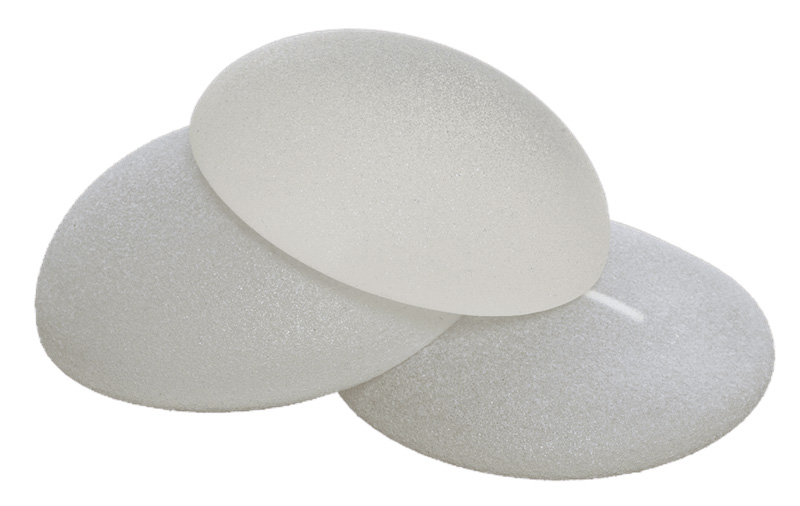
Polytech Breast Implants manufactured in Germany Implants of Excellence program
The Implants of Excellence program is an additional guarantee as it documents the efficacy of POLYTECH gel-filled breast implants and establishes their traceability – for your safety. The program is designed to provide high personal safety for patients who opt for Politech breast implants and ensure the use of materials for the highest quality breast implants available on the market.
For all models of POLYTECH Breast Implants, the company gives lifelong guarantees for replacing implants in case of breakage.
In addition, for POLYTECH Microthane® Breast Implants, the company provides a free replacement of implants in case of capsular contraction, dislocation or rotation 10 years after the operation.
POLYTECH breast implants – the quality you can feel.
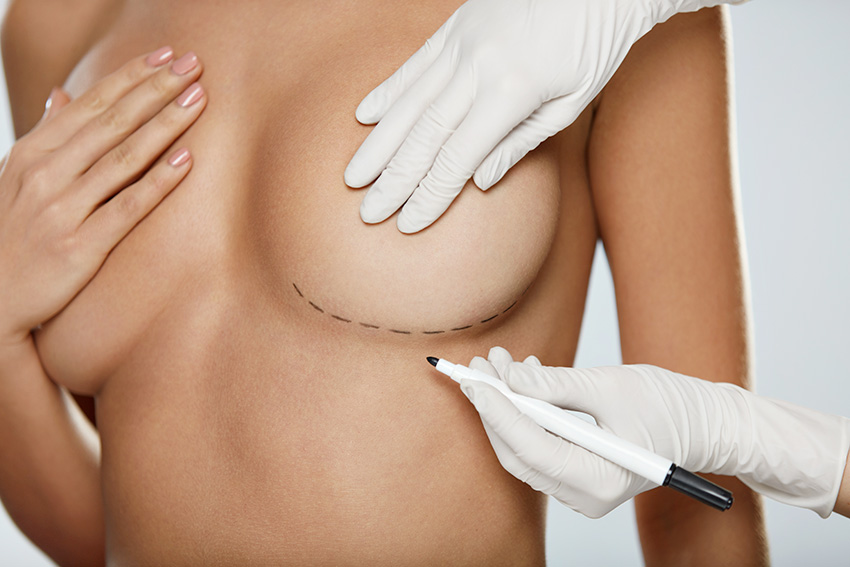
Preoperative procedure
As for all other procedures, complete laboratory testing is necessary, as well as an examination by an internist/anaesthesiologist for an optimal preparation of the patient for the operative procedure. All the necessary tests and diagnostics can be preformed at the same place, in the Specialized hospital Ars Medica.
A mammography control is recommended prior to the breast augmentation procedure.
On the day of the surgery you should come to the clinic on an empty stomach (not having eaten or drunk anything), bring all your documentation, and our staff will give you all other necessary information prior to your operation appointment in order to ease the whole procedure.
Anaesthesia
OPERATION
The breast augmentation procedure is performed through a small incision of a few centimetres made in the inframammary ridge, i.e. the natural crease beneath the breast.
An inframammary incision is recommended, although the procedure can also be performed through an areola incision, or through the armpit. The implants are always placed under the glandular tissue of the breast, and they can be implanted either above or below the pectoral muscle, or in the so-called “dual plane” zone, i.e. between the muscles.
Along with micro drainage placed at the end of the procedure and removed after 24 hours, the patient is also given a postoperative compression bra made from a comfortable material, to be worn for 4 weeks after the procedure.
Postoperative procedure
Nakon obavljenog zahvata, u zavisnosti od njegove vrste i opsega, max 24h ostajete u Poliklinici kako biste se u potpunosti razbudili i oporavili. Nakon toga uz svoju pratnju napuštate bolnički smještaj. Dan nakon operacije se odstrane drenovi i dobijate poseban grudnjak koji je potrebno nositi 4-6 sedmica. Preporučuje se mirovanje prvih 24- 48 sati, a fizički napor izbjegavati 2-4 sedmice. Pacijentkinji je, u slučaju potrebe, na raspolaganju broj dežurnog telefona. Naše osoblje će Vam nakon operacije dati detaljna uputstva kako biste se što prije oporavili i vratili svojim svakodnevnim aktivnostima.

Alice Sherman, top model,
after breast augmentation by prim.dr.Glumičić
BREAST AUGMENTATION WITH FAT GRAFTING
About the procedure
Preoperative procedure
Anaesthesia
Operation
Postoperative procedure
BREAST LIFT
About the procedure
Preoperative procedure
Anaesthesia
Operation
Postoperative procedure
Postoperatively, the patient will stay with us for the first 24h to receive adequate care. Due to sometimes extensive reshaping of breast tissue, in order to provide maximum safety from complications such as i.e. haematoma, small rubber or silicone drains are placed in the breasts and removed 24h after the operation.
Afterwards, it is encouraged to wear a specially designed soft supporting bra that will be provided to you by our staff and should be worn 23h/day for a period of 6 weeks, in order to help resolve the swelling and protect the new breast shape in the initial healing process.
BREAST REDUCTION
About the procedure
Preoperative procedure
Anaesthesia
OPERATION
Postoperative procedure
MALE BREAST REDUCTION
About the procedure
Preoperative procedure
Anaesthesia
Operation
Postoperative procedure
BODY
Constant improvement.
ABDOMINOPLASTY
About the procedure
Preoperative procedure
Anaesthesia
OPERATION
Postoperative procedure
SMALL SURGICAL CORRECTIONS
REMOVAL OF BIRTHMARKS, FIBROMAS, ATHEROMAS, LIPOMAS, ...
SCAR CORRECTIONS
ESTHETIC NON SURGICAL PROCEDURES
Excellent long lasting result.
NON SURGICAL ‘LIQUID FACELIFT’
pROCEDURE
Before treatment
Anaesthesia
TREATMENT
POST TREATMENT
BOTOX
Treatment
Botox injection treatment lasts for around 5 – 10 minutes and, besides a minimal discomfort during the microneedle puncture, no other discomforts are experienced. In very rare cases, light bruising can appear at the injection site, but it will disappear in 24 – 48 hours.
BOTOX application performed by a licensed and educated physician is extremely safe, and botox itself is metabolised only locally, at the site of injection, and does not spread to other body parts. Since this product has been used in medicine for more than 30 years, and it has been applied in neurology and ophthalmology, its application in aesthetic medicine is only an indicator of the safety of this treatment.
Effective for
BOTOX is very effective for the REMOVAL of eye wrinkles, wrinkles on the forehead and around the nose, as well as neck wrinkles, and it also LIFTS eyebrows, removes the signs of neck ageing and significantly renews and rejuvenates the facial appearance.
How long does it last
The botox effect is evident after 2 – 5 days, maximised in up to 14 days and remains that way for 4 – 6 months, when application can be repeated without any fears.
FILLERS – HYALURONIC ACID
HYALURONIC ACID has been the golden standard for injection therapy for a number of years. It is a stabilized non-animal hyaluronic acid produced through biotechnological procedures in very strict laboratory conditions. Due to its high stability and non-allergic characteristics, HYALURONIC ACID is extremely biocompatible with the human tissue and can be applied without a prior test application.
HYALURONIC ACID is used for:
- CORRECTION OF WRINKLES:
- nasolabial folds;
- wrinkles caused by smoking;
- laugh lines;
- under-eye bags;
- mentolabial lines;
- glabellar and forehead wrinkles;
- acne or injury scars
- FACIAL CONTOURING:
- Lip shaping / enhancement;
- Cheek / cheekbone shaping;
- Chin shaping;
- Nose shaping / nose defects;
- Eyebrow shaping.
- REJUVENATION OF DRY AND EXHAUSTED SKIN OF FACE AND DECOLLETAGE
The effect of hyaluronic injection products lasts for around 8 – 12 months, although the effect of some products, depending on the cohesion of the acid itself, can last up to 16 months and longer, depending on the type of product and the manufacturer, as well as on the individual body and its resorption capabilities.


